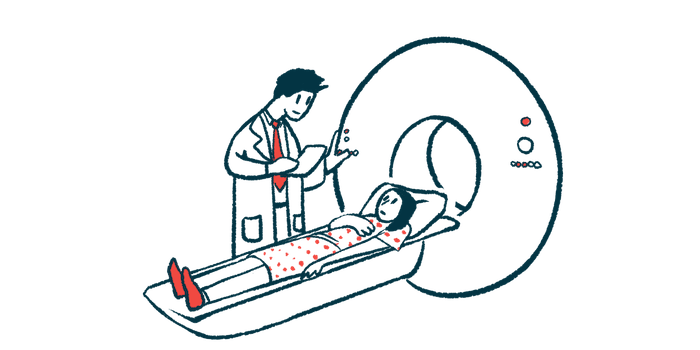Developing NMOSD After Age 50 Linked to Worse Outcomes: Study
Age of NMOSD onset can influence the course of disease

People who develop neuromyelitis optica spectrum disorder (NMOSD) later in life may go on to experience worse outcomes than those who have early-onset disease, a study in China has found.
Worse outcomes included a higher frequency of inflammation of the thoracic spinal cord during relapses, more brain lesions and painful sensory symptoms, and greater anxiety, cognitive impairment, and trouble sleeping.
These findings add to previous studies highlighting that age of onset influences clinical and imaging features, as well as the course of the disease, in NMOSD patients.
The study, “Clinical characteristics of late-onset neuromyelitis optica spectrum disorder,” was published in the journal Multiple Sclerosis and Related Disorders.
NMOSD is classified as early-onset when symptoms start before age 50
NMOSD is an autoimmune disease caused by the production of self-reactive antibodies (autoantibodies) that wrongly attack healthy cells in the nervous system. The most common target of these autoantibodies is the water channel protein aquaporin-4 (AQP4), but other targets have been identified.
The disease is characterized by inflammation of the optic nerve (optic neuritis) and the spinal cord (transverse myelitis). The optic nerve emerges from the brain and connects it to the eye. Optic neuritis may cause eye pain and poor vision, while transverse myelitis may lead to arm and leg weakness.
By conventional classifications, NMOSD can be considered early-onset when symptoms start before age 50, and classified as late-onset when symptoms develop at 50 or older.
The age of symptom onset has been known to influence how the disease will turn out over time. However, most previous work was done only in NMOSD patients who were positive for anti-AQP4 autoantibodies.
To add information to previous work, a team of researchers in China looked for differences in clinical and imaging characteristics between people with early-onset NMOSD and those with late-onset disease.
The study included 50 NMOSD patients (42 women and eight men) with a median age of 49.5 years and who were followed for a median of 25 months (about two years). A total of 28 patients had early-onset disease, while the remaining 22 had late-onset NMOSD.
Results showed that people with late-onset NMOSD developed the first symptoms a median 21.5 years later than those with early-onset disease (54 vs. 32.5 years).
Age at onset could have important implications for the long-term prognosis of NMOSD patients.
Up to 80% of participants tested positive for anti-AQP4 autoantibodies
As expected, up to 80% of all the participants tested positive for anti-AQP4 autoantibodies. However, a higher proportion of late-onset disease patients were positive for these autoantibodies both during relapses (100% vs. 63.6% of early-onset disease patients) and times of remission (95.5% vs. 64.3%).
Also, the median levels of anti-AQP4 autoantibodies were also significantly higher among people with late-onset NMOSD compared with those with early-onset disease.
“Transverse myelitis was the most frequent symptom at disease onset” in both groups, the team wrote.
Magnetic resonance imaging scans revealed that a significantly greater proportion of late-onset NMOSD patients experienced inflammation of the thoracic section of the spine during relapse relative to those with early-onset disease. People with late-onset NMOSD also had significantly more brain lesions.
The patients also completed a battery of validated tests to assess for disease severity or disability, cognitive function, pain, fatigue, ability to perform daily activities, sleep, anxiety, and depression.
Data showed that those with late-onset NMOSD had significantly worse sensory symptoms (typically numbness), more anxiety and trouble sleeping, and worse cognitive function than those with early-onset NMOSD.
Among people with late-onset NMOSD, higher levels of anti-AQP4 autoantibodies were significantly associated with older age, higher annual relapse rate, more sensory and sleep problems, and worse ability to perform activities of daily living.
In addition, worse sensory symptoms were significantly linked to older age, more anxiety, depression, sleep problems, severe cognitive impairment, and greater difficulties in daily activities.
Similarly, larger brain lesions were linked to older age, worse walking and sensory problems, and more severe cognitive impairment and sleep difficulties.
These findings suggest that “age at onset could have important implications for the long-term prognosis of NMOSD patients,” the researchers wrote.
Levels of anti-AQP4 autoantibodies, sensory symptoms, and brain lesions “are factors associated with NMOSD patients’ quality of life in terms of depression, anxiety, sleep architecture, memory ability, and cognitive function,” they added.








